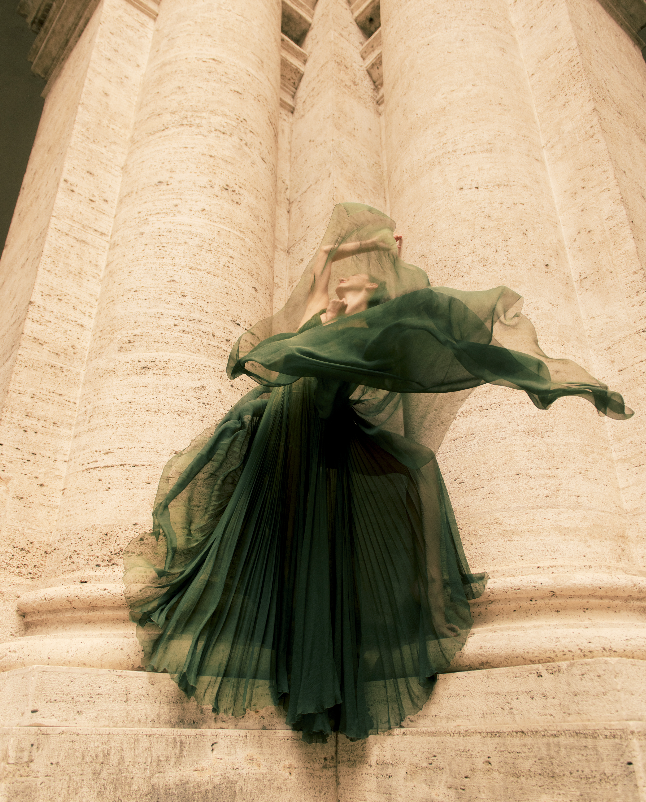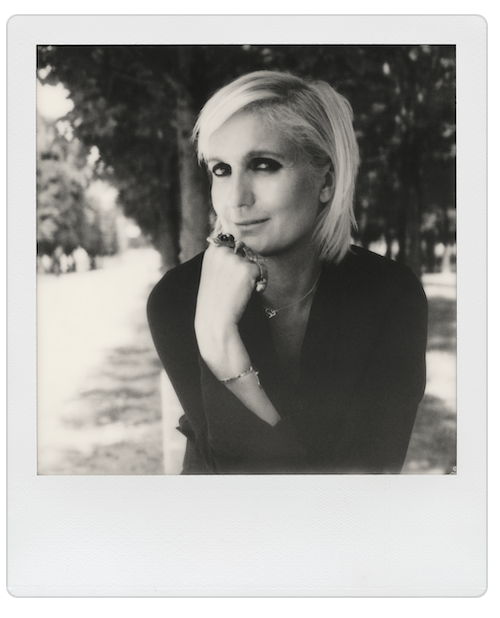Maria Grazia Chiuri on Her Time at Dior, Costume Design and Teamwork

ROME — “I am convinced that only art will save the world.”
So believes Maria Grazia Chiuri, artistic director of womenswear at Dior, speaking with WWD about “Nuit Romaine,” a film directed by Angelin Preljocaj that is set in the 16th-century stately Renaissance Palazzo Farnese, headquarters of the French Embassy in Italy. The embassy, Dior and the Teatro dell’Opera di Roma worked together to complete the film, which will be broadcast on Friday, International Dance Day, on the couture brand’s YouTube channel and social networks.
More from WWD
“Art is so strong that it has the power to look beyond the difficult moments and regenerate,” said Chiuri in one of the salons of the palazzo, following a preview screening of the film.
She was grateful to Dior and her team for succeeding in working through the COVID-19 pandemic last year and delivering the fashion collections, but also for allowing her to create the costumes for “Nuit Romaine” during “difficult times for everyone — it was tough for small brands but for established ones, as well,” she admitted. “All sectors were touched and it was emotional to see the film now, knowing what went into it, working during the lockdowns and the travel restrictions, with half the team in Rome, half in Paris. And last year we never stopped, we held the cruise show in Lecce, we did the film with Matteo Garrone to show the couture collection. It’s been an incredible year. And now with this war [in Ukraine], the moment is even more poignant and it is important to give hope, that all of this can be overcome.”
Chiuri is thus more focused than ever on promoting the arts, as well as fashion, thinking about the new generations, including the dancers who were shut out from any public activity during the pandemic. “So many young people saw their life change radically and felt lost. We need to support them, help them by giving them prospects for the future.”
For “Nuit Romaine,” Chiuri collaborated once again with Eleonora Abbagnato, ballet director of the Teatro dell’Opera di Roma and star of the Opéra national de Paris, following the ballet “Nuit Blanche” in 2019, whose costumes she also designed.
“I very much believe in communal projects, in the exchange between different worlds. To be an artist means to create a world that you would want, that you dream of,” she said.
Clearly, Chiuri does not believe in designers trapped in their ivory towers, and she gave a shout-out to the Biagiotti atelier, also based in Rome, which helped her during the pandemic with some of the costumes for “Nuit Romaine,” leveraging a long-standing personal relationship with the Biagiotti family.

courtesy of Dior
Six years after landing her post at Dior, Chiuri is not looking back and, on the contrary, she continues to be passionate about her work, underscoring the importance of being stimulated by sharing projects with other creative minds or with young designers, including her daughter Rachele Regini, who has joined the Dior team.
In “Nuit Romaine,” Abbagnato plays Nox, goddess of the night, and is flanked by Friedemann Vogel. As she dances through the palace, she meets other dancers portraying popes, dukes and noble women who lived in Palazzo Farnese over the centuries.
“It’s so inspiring to measure yourself with artists that use their bodies in different ways, experimenting with new techniques, but working on an aesthetic that must also be functional,” explained Chiuri, who shares with Christian Dior himself a passion for ballet.
The costumes were exquisite, with delicate draping and pleating executed by hand on capes and dresses that at times, though, also needed to convey the idea of armor, yet allow freedom of movement. Lace inlays, cascades of beads and color gradations created spectacular effects. Hand-painted costumes, designed as trompe-l’oeil, were decorated with the characters that are featured in the Carracci frescoes on the vault of the Farnese Gallery. Like a journey through time and in contrast, some jeans, T-shirts and sneakers were also part of the lineup.
As a Roman, Chiuri was familiar with Palazzo Farnese and its artworks, but she admitted pairing the different characters, the history and the art with the clothes was “quite complex.”
Costume design is not a new outlet for Chiuri, who in 2016 also worked with the Rome Opera when she was creative codirector of Valentino, designing costumes for “La Traviata” directed by Sofia Coppola.
Asked whether she believed there was generally an increasing interest in period films, the designer said: “Yes, they make you think about how society has changed — and it has changed a lot. Clothes reflect a historical period and the evolution of humanity and our bodies. The value of fashion and clothes is underestimated. Clothes say a lot about us and they have deep meanings. As do colors: think about red and how it conveys power. I am interested not only in fashion, but in the history of fashion and the evolution of clothes. As a feminist, I believe the lives of women have been conditioned through clothes, when they couldn’t walk or leave the home because they were so cumbersome.”
After 38 years in the industry, Chiuri said she’s seen her share of cycles, but that women leading fashion houses are still few and far between. “There are many women working in fashion, but it’s very complex to get to the top as it is in other sectors. We must insist and make it easier for the new generations to have more access to the pivotal spots,” reasoned Chiuri, praising Dior for its role in mentoring young women.
“You can never lower your guard and must always push to have a voice and fight for your rights,” she said lamenting how, for example, “there’s not enough talk about Afghan women today now.”
Abbagnato is an example of “strong will, rigorous training and talent” having contributed to her success, said Chiuri. “To know her and work with her has enriched me. She trusts me and my work and we have become friends. I consider all the people I have worked with my creative family, the exchange is always stimulating and we continue the relationships beyond our common projects.”
Like Chiuri, Abbagnato has built a cultural bridge between Italy and France and, responding to a question about her time working in the latter country, the designer said: “France is very institutional compared with Italy. Fashion is strongly embedded within the cultural system, there is no difference between fashion, art, culture, or theater, it’s all under the same cultural umbrella.”
In Italy, on the other hand, is “unfortunately less so as fashion is seen more as an artisanal business or a social experience, and there is less awareness at the institutional levels of the value of fashion. However, Italy is Mediterranean, surrounded by three seas, and it’s a country that has the ability to deal with everyone with an easy attitude. I like to think that I brought a little of this lightness to France — I maintained the shapes while lightening up the constructions,” she said with a chuckle.
“I like to be in constant dialogue between two worlds and two cultures. I try to take the best of both, respecting the Dior heritage and bringing it forward. I learned a lot in these six years at Dior and we think we know a country or a culture, but to live and breathe a culture is something else, you understand more of your own and your own references,” she concluded.

image courtesy of Dior
Best of WWD
Sign up for WWD's Newsletter. For the latest news, follow us on Twitter, Facebook, and Instagram.